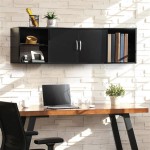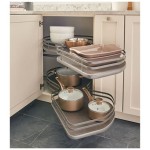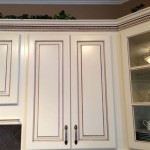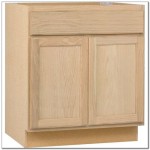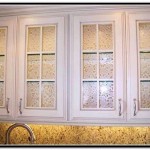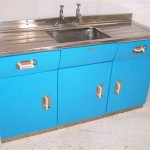Enhancing Your Kitchen With A Cabinet Sink Base
The kitchen sink base cabinet plays a crucial role in the functionality and aesthetics of any kitchen. It provides essential support for the sink, conceals plumbing, and often offers valuable storage space. Selecting the right cabinet sink base requires careful consideration of size, style, construction materials, and desired features. A well-chosen sink base cabinet enhances the overall kitchen design while optimizing workflow and organization.
Choosing the appropriate cabinet sink base is more than just selecting a box to hold the sink. It involves understanding the various options available, considering the limitations of the space, and aligning the choice with both practical needs and aesthetic preferences. This article will explore the key considerations involved in selecting a suitable cabinet sink base, focusing on aspects of functionality, design, and installation.
Determining the Right Size for Your Cabinet Sink Base
One of the foremost considerations when selecting a cabinet sink base is its size. The width of the cabinet must accommodate the chosen sink size, leaving sufficient clearance for plumbing connections and potential future modifications. Standard sink base cabinet widths typically range from 24 inches to 48 inches, with 36 inches being a common choice for many standard-sized sinks. However, the specific dimensions of the sink, including its depth and width, should be carefully measured before selecting the corresponding cabinet.
It is essential to account for the space required for the sink's drain assembly, water supply lines, and any garbage disposal unit. These components can occupy considerable space within the cabinet, potentially restricting storage capacity. When dealing with smaller kitchen spaces, maximizing storage efficiency within the sink base cabinet becomes even more crucial. Consider shallower sink bowls or compact plumbing configurations to optimize available space.
Height is another critical dimension. Standard kitchen base cabinets typically have a height of 34.5 inches, which, when combined with a standard countertop thickness of 1.5 inches, results in a total countertop height of 36 inches. However, variations in personal preference and accessibility requirements sometimes necessitate adjusting the cabinet height. Taller individuals might benefit from a slightly higher countertop height to reduce back strain, while those with mobility limitations might require a lower height for easier access. Adjustable cabinet legs can provide flexibility in achieving the desired countertop height.
Depth is equally important. Standard base cabinet depth is typically 24 inches, allowing for sufficient countertop overhang. However, some kitchens might benefit from shallower or deeper cabinets, depending on the overall layout and available space. In narrow kitchens, shallower cabinets can create more walking space, while deeper cabinets provide increased storage capacity.
Beyond the external dimensions, understanding the internal dimensions of the cabinet is crucial. The usable storage space within the cabinet is affected by the presence of the sink bowl, plumbing, and any structural components. To maximize storage efficiency, consider incorporating pull-out shelves, organizers, or other storage solutions specifically designed for sink base cabinets.
Ultimately, accurate measurements and careful consideration of the sink's dimensions, plumbing requirements, and personal preferences are vital in determining the appropriate size for the cabinet sink base. A well-sized cabinet will provide adequate support for the sink, conceal plumbing effectively, and maximize usable storage space within the kitchen.
Exploring Different Styles and Materials
The style and material of the cabinet sink base profoundly impact the overall aesthetic of the kitchen. A wide variety of styles and materials are available, each offering unique advantages in terms of appearance, durability, and cost. Choosing the right style and material requires careful consideration of the kitchen's overall design theme and the desired balance between aesthetics and practicality.
Cabinet styles range from traditional to modern, offering a diverse array of design options to complement any kitchen decor. Traditional styles often feature raised panel doors, ornate moldings, and intricate hardware, creating a classic and elegant look. Shaker-style cabinets, characterized by their simple, clean lines and recessed panel doors, offer a versatile and timeless aesthetic that complements both traditional and contemporary kitchens.
Modern cabinet styles typically emphasize sleek, minimalist designs with flat panel doors, frameless construction, and understated hardware. These cabinets often incorporate innovative features such as integrated lighting, touch-latch closures, and concealed hinges. Contemporary kitchens often feature a mix of materials and textures, creating a visually dynamic and engaging space.
Several materials are commonly used in the construction of cabinet sink bases, each offering distinct characteristics. Solid wood cabinets are highly regarded for their durability, beauty, and natural warmth. Wood species such as maple, oak, cherry, and walnut offer a range of grain patterns and color variations, allowing for customization to suit individual preferences. Solid wood cabinets are typically more expensive than other options but can last for generations with proper care.
Plywood cabinets offer a cost-effective alternative to solid wood while still providing excellent strength and stability. High-quality plywood is less prone to warping or cracking than solid wood, making it a durable choice for kitchen cabinets. Plywood cabinets are often faced with wood veneer or laminate to achieve the desired aesthetic.
Particleboard cabinets are the most affordable option but are also the least durable. Particleboard is composed of wood chips and resin, making it susceptible to moisture damage. However, particleboard cabinets can be a suitable choice for budget-conscious homeowners, provided they are properly sealed and protected from moisture.
Laminate cabinets consist of a substrate, such as particleboard or MDF, covered with a decorative laminate layer. Laminate is a durable, low-maintenance material that is resistant to scratches, stains, and fading. Laminate cabinets are available in a wide range of colors and patterns, including wood grain simulations.
The choice of hardware, such as knobs and pulls, also contributes significantly to the overall style of the cabinet. Hardware can range from simple and functional to ornate and decorative, allowing for customization to match the kitchen's design theme. Selecting high-quality hardware ensures durability and longevity.
In summary, the selection of style and material for the cabinet sink base should reflect the kitchen's overall design aesthetic and the desired balance between appearance, durability, and cost. A carefully chosen cabinet style and material will enhance the kitchen's visual appeal and provide years of reliable service.
Optimizing Storage and Functionality
The cabinet sink base often presents a challenge in terms of storage due to the presence of plumbing and the irregular shape of the space. However, with careful planning and the incorporation of innovative storage solutions, the sink base cabinet can be transformed into a highly functional and organized space. Maximizing storage and functionality within the sink base cabinet enhances the overall efficiency of the kitchen and provides convenient access to essential items.
One common strategy for optimizing storage is to install pull-out shelves or drawers. These allow for easy access to items stored deep within the cabinet, eliminating the need to reach and fumble for items in the back. Pull-out shelves are particularly useful for storing cleaning supplies, dish soap, and other frequently used items. Some pull-out shelves are designed with adjustable dividers to accommodate different sizes of containers.
Under-sink storage organizers are specifically designed to fit around the plumbing pipes and maximize the available space. These organizers typically feature shelves, baskets, or drawers that provide dedicated storage for various items. Some organizers also include hooks or racks for hanging cleaning supplies or dish towels.
Another option is to install a tip-out tray, which is a shallow tray that is installed in front of the sink. This tray is ideal for storing small items such as sponges, scrub brushes, and sink stoppers. A tip-out tray keeps these items readily accessible while concealing them from view.
Utilizing the cabinet door for storage can also be an effective way to maximize space. Door-mounted racks or baskets can be used to store cleaning supplies, pot lids, or other lightweight items. These racks are typically easy to install and can significantly increase the available storage space.
A garbage disposal unit can occupy a significant amount of space within the sink base cabinet. Consider selecting a compact garbage disposal model to minimize its footprint. Alternatively, explore alternatives to traditional garbage disposals, such as composting or food waste recycling programs.
For larger sink base cabinets, consider dividing the space into multiple zones to create dedicated storage areas for different types of items. For example, one zone could be used for cleaning supplies, another for food storage containers, and another for recycling. This approach provides better organization and makes it easier to find what you need.
Proper lighting can also enhance the functionality of the sink base cabinet. Installing under-cabinet lighting or interior cabinet lighting makes it easier to see and access items stored within the cabinet, especially in dimly lit kitchens. LED lighting is an energy-efficient and long-lasting option.
In conclusion, by implementing strategic storage solutions and optimizing the layout of the sink base cabinet, it is possible to transform this often-underutilized space into a highly functional and organized area. This enhances the overall efficiency of the kitchen and provides convenient access to essential items.

2025 Complete Guide To Sink Base Cabinet Dimensions Key Sizes Custom Options

Sink Base Supercabinet Organization Diamond Cabinets

2025 Complete Guide To Sink Base Cabinet Dimensions Key Sizes Custom Options

Country Sink Base Cabinet Specialty S Diamond Cabinets

2025 Complete Guide To Sink Base Cabinet Dimensions Key Sizes Custom Options

How To Add Vintage Charm With A Diy Reclaimed Wood Sink Cabinet The Created Home

Hampton Bay Shaker 30 In W X 24 D 34 5 H Assembled Sink Base Kitchen Cabinet Dove Gray Ksb30 Sdv The Home Depot

27in Sink Base Cabinet Carcass Frameless Rogue Engineer

8 Kitchen Cabinet Alternatives Unique Storage With Style

Your Guide Custom Kitchen Cabinets Best Remodeling Ideas
Related Posts

